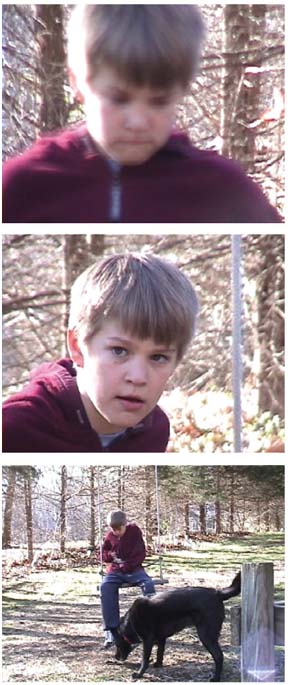Video Composition: A Crash Course
The tips in this chapter so far have been designed to turn you from an amateur into a more accomplished technician. Now it’s time to train the artist in you.
Even when shooting casual home movie footage, consider the compositionof the shot—the way the subject fills the frame, the way the parts of the picture relate to each other, and so on. Will the shot be clearer, better, or more interesting if you move closer? What about walking around to the other side of the action, or zooming in slightly, or letting tall grass fill the foreground? Would the shot be more interesting if it were framed by horizontal, vertical, or diagonal structures (such as branches, pillars, or a road stretching away)? All of this floats through a veteran director’s head before the camera starts to roll.
As an iMovie-maker, you, unlike millions of other camcorder owners, no longer need to be concerned with the sequence or length of the shots you capture, since you can rearrange or trim your footage all you want in iMovie. Your main concern when filming is to get the raw footage you’ll need: you can’t touch the composition of a shot once you’re in iMovie.

Figure 2-7. For freedom of zooming without worrying about going out of focus, begin by zooming in all the way (top). Then use the focus ring to focus (middle). Now you can zoom in or out to any level, before or during the shot ...
Get iMovie 6 & iDVD: The Missing Manual now with the O’Reilly learning platform.
O’Reilly members experience books, live events, courses curated by job role, and more from O’Reilly and nearly 200 top publishers.

